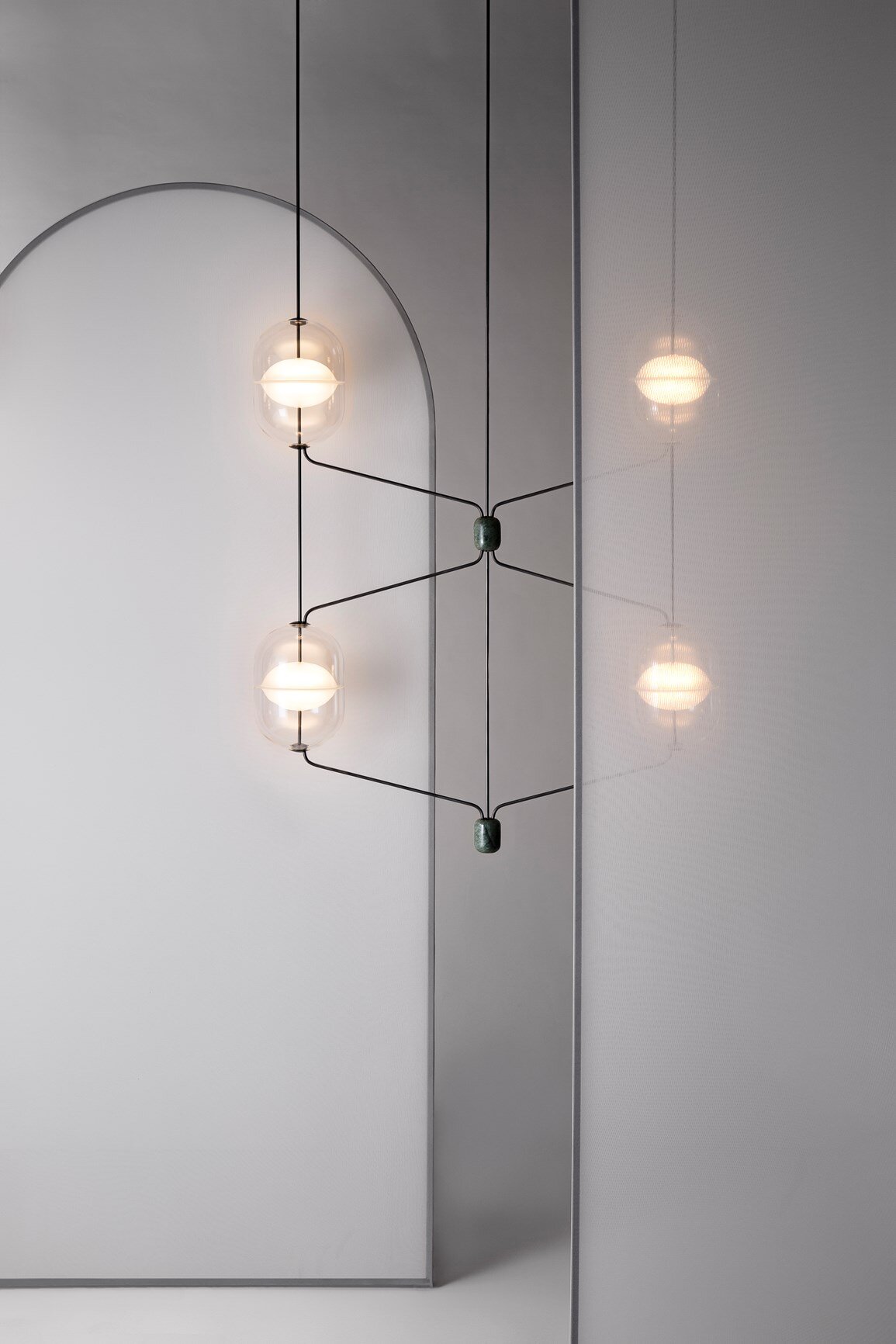Nikolai Kotlarczyk first met Michael Murray, director of Melbourne-based lighting company Rakumba by chance at an impromptu dinner of Australian designers in Milan several years ago. “I have no idea who invited me and my friend (and fellow expat Aussie designer) Glen Baghurst to the dinner - maybe it was the guys from Dowel Jones. We didn't really know any of the other Australian designers that well because both of us had been living away from Australia for quite a few years - me in Denmark and Glen in Sweden. Anyway, Michael was there and I think he had seen some of my brass pieces and really liked the story behind them and invited me to send him some ideas” says Kotlarczyk. “It was not until years later that we actually started a proper dialogue, but it stemmed from that chance meeting, as a lot of things do”.
Eventually Kotlarczyk and Murray began talking about the specifics of a lighting collection but at first this was focused on large cast glass elements. These proved to be too difficult to manufacture and various other material options were explored including slip cast porcelain. “Although appealing the porcelain process ended up losing some of the original language of the design, so I pretty much started from scratch and presented new concepts” says Kotlarczyk. Two years ago Kotlarczyk and Murray settled on a design that captured something of the emotion of Copenhagen’s streets. “I just presented two dimensional drawings, nothing overly detailed but they had the same anchor details and decorative inter-connecting features as what has ended up in the final versions of ‘Indre’. The actual design of the lightsource came later at a workshop we did in a cafe in Milan. We knew we wanted a blown glass feature, but we were thinking of ways to incorporate a diffuser and this led to all of us thinking - why not integrate the lighting element and diffuser into a single unit. In hindsight simple, but this was technically very challenging“ says Kotlarczyk.
A lot of experimentation and a long search for possible manufacturers finally led to a large collection of delicate light fittings where the shade encapsulates the diffuser in a very poetic and romantic way. Melding motifs from Copenhagen’s catenary street lighting (that stretch between buildings) with contemporary technologies, fine borosilicate glass and marble components, Kotlarczyk has created a surprisingly nostalgic but timeless lighting design. From the start ‘Indre’ was conceived to be a totally flexible system ranging from a single table lamp to a complex chandelier as standard but with the option for architects and interior designers to specify the light in a multitude of ways. Indre’s curvaceous structure works both as a linear fitting, growing either vertically or horizontally to any size but also as a three dimensional fitting in the style of classic multi-tiered glass chandeliers.
“The aesthetic is really a mix of old and new. The nostalgic element has become more pronounced as the final versions have come together”, says Kotlarczyk. “It just seems to be an inherent part of the design. I really like a graphic element in my work, and the interconnecting steel rods provide this when repeated vertical or horizontally. In general my work is heavily inspired by interior design as this is where I started my career and I really want to design pieces for designers to use within their spaces, whether they are commercial or residential. This desire became the starting point for a modular system, so it would be suitable for different spaces in a structural way... not just clusters of lights for bigger spaces, but to build some spatial planning into the system”.
Encasing a soft white diffuser inside a clear glass stretched sphere, ‘Indre’ hangs from fine rods of metal and terminates in an ‘anchor’ in Nero Marquina, Forest Green or Carrara Marble, Travertine or natural Oak, creating a light that appears to be floating in water or space. However, it is when the spacing elements come into play that the design really transcends current design aesthetics and becomes a magical mix of eras. In this form the lyrical, gently curving components are a subtle interpretation of wrought iron objects from the 19th century and deliver an instant hit of nostalgia for the non-linear and the hand made. Despite its precise ‘scientific’ glass elements and modern manufacturing techniques ‘Indre’ ultimately feels crafted (in the true sense of the word) but due to its proportions remains astonishingly delicate.
Kotlarczyk’s move to Denmark was a thing of chance. Living in Johnston Street in Fitzroy (Melbourne, Australia) Kotlarczyk had some Danish neighbours who became good friends and a when the desire to travel became too great to resist he naturally visited Copenhagen. One year turned into many and now he has a Danish partner, a 3 year old child and a studio. While Copenhagen is now home, the designer retains a strong connection with Australia. To work with an innovative Australian company like Rakumba was a perfect opportunity to bring his work to the attention of an Australian audience at the same time as launching it to a global market. Having worked with Tait, Pulpo, New Works, Paper Collective and Portego, Kotlarczyk is just beginning to hit this stride and the lighting collection Indre should prove to be his launchpad.
Take a look at a video of the making of Indre here. For more details on Indre collection please visit Rakumba here. For a look at more designs by Nikolai Kotlarczyk please visit his website here. Some of Kotlarczyk’s furniture work is available through Australian company Design by Them










